One of the problems you can encounter when traveling by car is a punctured tire. Using a patch is a fairly common option to work around this issue.
Yet, if the hole is in a position like a tire wall, the problem becomes much more complicated because it is likely that the defensive position will not be patched.
So, how close to the sidewall can a tire be patched? A distance of 6 mm or more from the tire shoulder is required to fit a patch. In other words, if a crack is closer than 6mm, there’s almost nothing you can do about it!
Tire Sidewall OverviewFirst, let’s learn about sidewalls and how to identify them on your tires.
The wall is the rubber part from the outer edge of the rim to the road surface. This part also has the largest area, is the most flexible, and continuously deforms under loads when moving.
How Close To Sidewall Can A Tire Be Patched?As you know, the car’s wall is in a particular location, so it is pretty challenging to troubleshoot the hole here.
Manufacturers also recommend that you not choose the patch option if the spot is on the side of the vehicle or too close to this position. Then, how close to the sidewall can a tire be patched.
You cannot use the patch if the hole is close to the wheel with a gap of less than 6mm. In addition, you should note that if the hole is more significant than ¼ inch, the patch should not be used. In this case, if the patch is small, it cannot cover the hole, causing the wheel to deflate still when moving.
On the contrary, using a large patch can make the wheel more bulky, difficult to move, and unsafe.
Fix Sidewall DamageOther Related QuestionsTo better understand the problems that occur with the tires and how to overcome them effectively, you can refer to the following information.
We’ve put together some frequently asked questions that may help answer your questions on this topic.
Plug a flat tire: Is it possible?People are often concerned about whether it is safe to plug or patch a flat tire.
These two options are pretty standard in repairing or overcoming the problem of flat tires caused by rolling nails or other sharp objects.
The manufacturer still recommends that you better replace the tire with a new one when there is a problem because repairing with a plug or patch when a flat one is not a safe solution.
Yet, the cost of new tires is not cheap, and if you have this problem often, it is a big problem. So, many drivers use a plug or patch when a wheel is punctured.
There is a limit to the number of nails or patches on a product. You can use this option to temporarily fix the problem if you find a few small holes. If the wheel has many large holes or previous patches, it is best to replace it with a new one.
For a detailed guide, check out this video:
How close can a tire patch be to another patch?The gap between patches is also a topic that people are very interested in. When traveling on the road, you may encounter a flat one many times.
As you know, when the tires have had previous patches or punctures in close locations, it is better to replace them. In case
Can you patch a tire on the side of the road?In the case of a puncture on the tire side, the use of stickers is unlikely to have as much effect as you think.
The reason is that its wall adhesion is so thin that relatively few materials can adhere.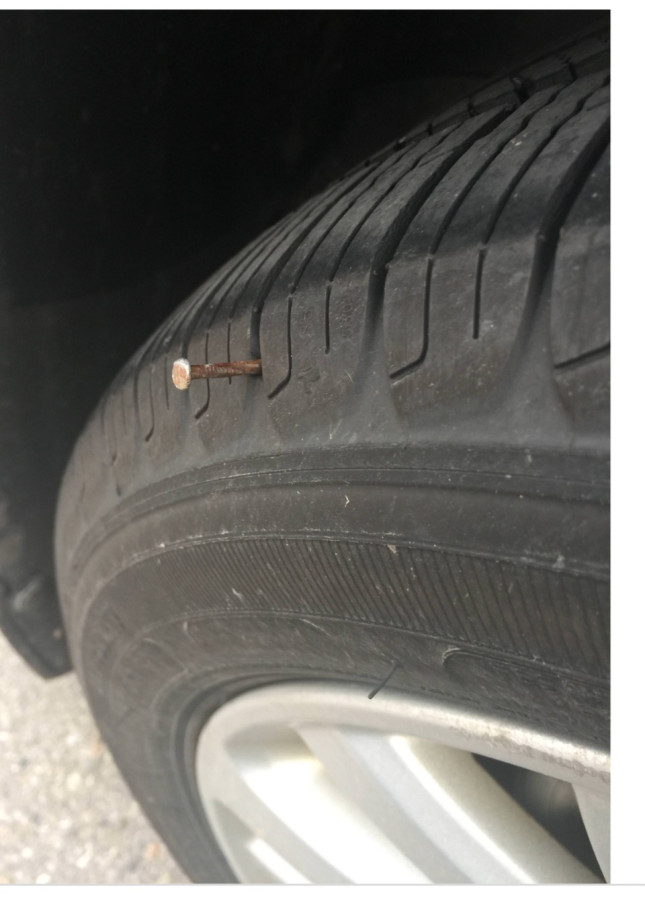 More specifically, damage to the sidewall will seriously damage the structure of a wheel.
More specifically, damage to the sidewall will seriously damage the structure of a wheel.
The solution to this problem is to insert an extra tube inside the wheel to ensure that you can still turn the whole thing.
How fast can you drive on a patched tire?A patched one will not achieve the same speed and performance as it once was. Therefore, the optimal level you can expect from such a version will not be more than 85 mph. Of course, this is just the limit that many manufacturers recommend, but you should not overdo this limit.
Can you patch a tire with 2 nails in it?The answer is yes! It’s just that the gap between the two punctures is at least 16 inches, and you might seal them with two large patches.
According to many manufacturers, the maximum number of times performed is two times. If more than that, it’s time to get a new one.
ConclusionAs such, a puncture in the side of the vehicle is a unique location where patching is not an optimal solution in this case. It would help if you changed to a new tire to ensure safety when traveling.
It would help if you changed to a new tire to ensure safety when traveling.
Thank you for following this post!
This post was last updated onThe rule is that any puncture less than half an inch from the start of the internal steel belt on the shoulder or sidewall cannot be patched. If the puncture is less than half an inch from the internal steel belt, then the tire must be disposed of for safety reasons.
What's In This Guide?
As mentioned above, a puncture can only be repaired if it is half an inch or more away from the internal steel belt’s edge. Any closer to the edge or past the edge is unsafe and the tire must be disposed of. The shoulder and sidewall of the tire are considered structural parts and any damage done to them renders the tire unsafe for use.
Any closer to the edge or past the edge is unsafe and the tire must be disposed of. The shoulder and sidewall of the tire are considered structural parts and any damage done to them renders the tire unsafe for use.
Along with the location of the puncture, there are also other variables that limit the repairability of a tire. Firstly, the size of a puncture cannot be greater than one-quarter of an inch. Anything larger than this and the tire needs to be replaced. Similarly, any irregular gashes or cuts exceeding one-quarter of an inch constitute the replacement of the tire.
A cut of any length right through the steel belt also requires a replacement because the structural integrity is compromised. Finally, a new repair may not overlap an old repair as this creates an unsafe situation. It is also noteworthy to mention that a patch by itself is not enough to be deemed a repair.
A properly repaired tire must have the punctured area totally filled by a suitable vulcanizing material or solid rubber stem. Once the puncture is plugged, a patch must be applied to the inner liner of the tire. Other than the above-mentioned damages, a tire can be repaired in the main tread area.
Once the puncture is plugged, a patch must be applied to the inner liner of the tire. Other than the above-mentioned damages, a tire can be repaired in the main tread area.
Once the location of the puncture has been found, the first step in the patching process is removing the tire from the rim. Simply plugging the hole is not a proper repair job and will not last. Once the tire has been removed, the puncture can be better examined to ensure that the damage is not too extensive.
If the damage is repairable, then the puncture needs to be filed smooth to that it does not expand any further. The surface area around the puncture on the inside of the tire also needs to be cleaned a prepared so that the patch holds.
Once the area is prepared the puncture hole can be filled with either a suitable vulcanizing material or a solid rubber stem. I have had more success with vulcanizing cement because it binds with the rubber of the tire. Once the hole is plugged, you are free to apply the patch.
Once the hole is plugged, you are free to apply the patch.
Applying the patch itself is quite straightforward, however, instructions can differ depending on the brand so make sure to follow the included instructions that come with the patch kit. Once the patching is done you are ready to put the tire back on and hit the road again.
Remember that your tire is not good as new now. Once a puncher has occurred and a patchwork is performed the tire will not be able to perform the same way. You will still have the same amount of grip, however, the top speed of the tire and long-distance travel range has been reduced.
As the tire heats up due to high speeds or many hours of use, the patch could come off, resulting in a loss of air pressure. This happens because the tire and patch expand and contract at different rates, essentially ripping the patch off.
How Do You Avoid Getting a Puncture?Basically, there are five things you can do to minimize your chances of getting a puncture in the first place.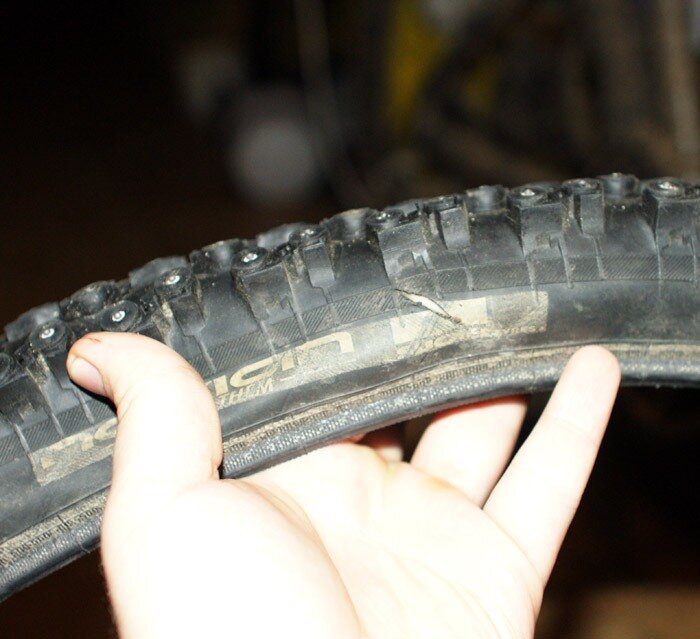 These five are: Checking your tire pressures, rotating your tires, avoiding road hazards, avoiding overloading your tires, and keeping an eye out for recalls.
These five are: Checking your tire pressures, rotating your tires, avoiding road hazards, avoiding overloading your tires, and keeping an eye out for recalls.
Keep in mind that there is no sure way to prevent a puncture, there are simple little things you can do that will help lower the risks of getting a puncture.
Checking Your Tire PressuresMaintaining the correct tire pressure is one of the most important things you can do when it comes to vehicle maintenance. Both too much tire pressure and too little tire pressure can cause a puncture or blowout.
Too much tire pressure is more likely to give you a puncture because the tire is not able to give way when it hits a foreign object. Whereas too little tire pressure can put the tire’s sidewalls at risk of punctures. Not only is this worse because a sidewall puncture is irreparable, but the sidewall is also more vulnerable because it doesn’t have a steel belt.
Furthermore, incorrect tire pressures can cause blowouts because the tire is incapable of shedding excess heat. It is important to check your tire pressures at least once a month to make sure they are correct for your vehicle. Remember the correct pressure is not the one listed on the tire but rather it is the pressure listed on the door jamb sticker or in the vehicle’s manual.
It is important to check your tire pressures at least once a month to make sure they are correct for your vehicle. Remember the correct pressure is not the one listed on the tire but rather it is the pressure listed on the door jamb sticker or in the vehicle’s manual.
You might be asking yourself what rotating your tires has to do with punctures. It all comes down to the tread. The tread of your tire is what makes contact with the road. Along with providing traction and water displacement, it is there to protect the internal parts of the tire from forging object damage.
If you do not rotate your tires, the tread will wear unevenly and become worn out faster in certain areas. When this happens, there is less protection for the tire which results in more punctures that would normally not affect the tire.
Avoid Road HazardsThis is a pretty straightforward one, right? Just don’t drive through debris on the road.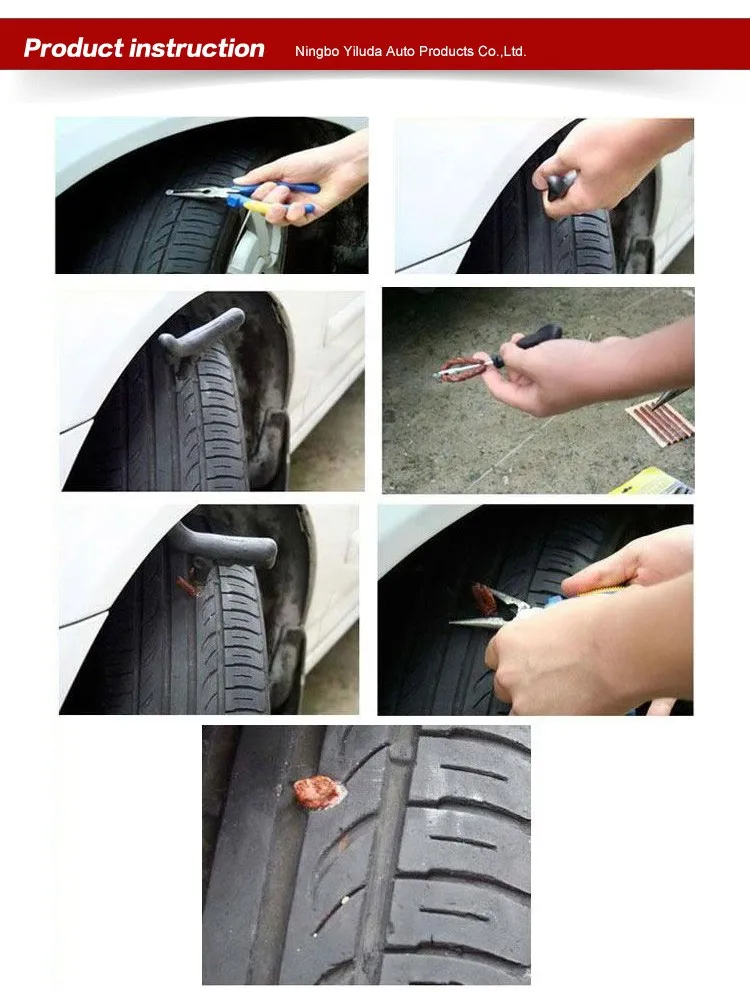 Well, yes, but it’s a little more complicated than that. Obviously, we are all going to steer clear of any major debris on the road, but what about the debris you can’t see?
Well, yes, but it’s a little more complicated than that. Obviously, we are all going to steer clear of any major debris on the road, but what about the debris you can’t see?
The shoulders of a lot of highways and roads are littered with small debris you cannot see from the driver’s seat. steering clear of any shoulders and gutters will dramatically reduce the risk of a puncture. Furthermore, always try to avoid any kind of object on the road, even if it looks like a smooth plank or an empty box, it could have nails in it.
Don’t Overload Your TiresJust like increasing the pressure in your tires, overloading your tires will increase the chance of a puncture. Additionally, you run the risk of a blowout when you overload your tires, so not a good choice overall.
Watch For RecallsSometimes things just go wrong from the manufacturer’s side of things. For this reason, I like to keep an eye on recalls for both my vehicle and tires. Sometimes a tire does not hold up as it is advertised which could result in more punctures.
Sometimes a tire does not hold up as it is advertised which could result in more punctures.
There are websites you can sign up to so that when the tires get recalled you get an email about it. Even if you don’t have any issues with your tires, it’s a good idea to recall them if you can. Not only is it safer but you get a free set to replace them!
ConclusionTo sum it all up, you can only patch a tire if the damage is more than half an inch from the edge of the steel belt found in the tread. It is recommended that the tire be removed and inspected to make sure that the puncture is in the repairable area.
If the puncture is less than half an inch or is on the shoulder or sidewall of the tire, the tire cannot be repaired. The side wall and shoulder are structurally critical to the integrity of the tire. Thus, it is a safety issue if they are damaged.
Furthermore, if the puncher is larger than a quarter of an inch, or has cut through the steel belt, the tire cannot be repaired.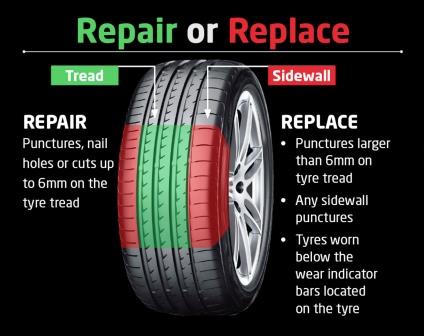 Finally, the best thing you can do to keep your tires in good condition is to maintain proper tire pressure.
Finally, the best thing you can do to keep your tires in good condition is to maintain proper tire pressure.
Author: Aleksey Kokorin
Experienced drivers are not surprised by such a trifle as a puncture, but for the first time beginners usually get confused in the sequence of actions, forget about important details and do not know what to do with a punctured wheel even in a tire shop - especially if they start offering choose from several options or intimidate with expensive repairs. Let's set up an operation algorithm when a flat tire is detected and figure out what to do right away and what to choose later.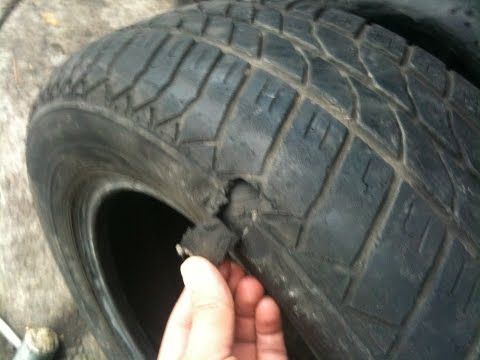
What to do when you find a puncture
Having found a flat tire, first of all you need to stop in a safe place, turn on the emergency alarm, assess visibility and, if necessary, set an emergency stop sign: according to traffic rules, it is installed at least 15 meters from the car in built-up area and at least 30 meters outside the built-up area. When choosing where to stop, consider the space to the side of the vehicle to handle a flat tire. You should not stop right on the road and in places where stopping and parking are prohibited: even if a punctured wheel belongs to the conditions of a forced stop, it is quite possible to drive several tens of meters on it to choose a safe and convenient parking place. At night or in conditions of limited visibility (for example, in fog or rain), it is imperative to wear a vest with retroreflective elements - this is required by clause 2.3.4 of the SDA and common sense.
Now you can start working on the wheel.![]() We will sequentially consider several options for action, and then move on to ways to repair a damaged tire.
We will sequentially consider several options for action, and then move on to ways to repair a damaged tire.
The most obvious solution to a flat tire is to replace it. If you have a spare tire that you are sure is in good condition, the best option is to install it and visit a tire shop to repair a punctured tire - such repairs will be more reliable and of high quality than doing it yourself.
If you don't have a suitable spare tire, but you do have a pump or compressor, you can assess the damage to the tire and try to pump it up again to get to the tire shop. It is better to start searching for an air leak with a valve (aka “nipple” or “nipple”): often a faulty spool becomes the cause of a flat tire. It is easy to check it: unscrew the protective cap (if there is one), pour water on it (or slobber it, as in childhood): air bubbles will leak. In this case, you can try to replace the spool valve by unscrewing it and screwing in a new one, but if there is no new valve, as well as a store nearby, you can try just unscrewing and screwing it back in. Regardless of whether it helped or not, you need to visit a tire shop to replace the entire spool or valve.
Regardless of whether it helped or not, you need to visit a tire shop to replace the entire spool or valve.
If the valve is tight and the tire is flat, it is most likely a puncture. The easiest way to find a puncture that is free of foreign objects is to pour water on the tire while looking at the surface: the damage will reveal itself as air bubbles. However, often the cause of the puncture can be found along with it: a self-tapping screw, nail or other arbitrary object sticking out of the wheel will clearly indicate the place of depressurization. In this case, you do not need to immediately remove the foreign object from the tire: it partially seals the hole, and if the pressure loss is slow, you can try to pump up the wheel and drive to the tire shop.
The same goes for wheels that are leaking from the rim or from a faulty valve. Usually, in this case, the air is bled slowly, and you can pump up the wheel and have time to get to the place of repair. By the way, rim leakage can occur due to disk deformation upon impact - for example, when hitting a pit with sharp edges. Such situations are fraught with damage to both the disk and the sidewall of the tire, in which case the disk will need to be corrected, and the tire repaired or even replaced. To avoid rim leaks, you need to inspect the rims every time you change tires. Loss of tightness occurs either due to corrosion or disk deformation, and not only steel, but also light alloy disks can corrode. So if you see paint swelling or rust on the rim, the tires need to be put on rim sealant: when changing tires, this will be cheaper than the subsequent removal and re-tire to fix a leak on the rim.
Such situations are fraught with damage to both the disk and the sidewall of the tire, in which case the disk will need to be corrected, and the tire repaired or even replaced. To avoid rim leaks, you need to inspect the rims every time you change tires. Loss of tightness occurs either due to corrosion or disk deformation, and not only steel, but also light alloy disks can corrode. So if you see paint swelling or rust on the rim, the tires need to be put on rim sealant: when changing tires, this will be cheaper than the subsequent removal and re-tire to fix a leak on the rim.
If you find a puncture, but there are no foreign objects in it, and you do not have a spare wheel and tire repair kits, there is another popular method of temporary "repair". You can screw a self-tapping screw into the found hole - if, of course, you have one. In extreme cases, you can look for a self-tapping screw in the cabin by unscrewing it from some interior detail. This method cannot be called reliable: it is unlikely to ensure complete tightness of the wheel, but at least it can help you get to the nearest tire shop.
And a couple more useful remarks. If the wheel is completely flat, then it is easier to inflate it without a spool: the latter must be unscrewed, then the tire must be inflated and quickly screwed back in. The fact is that the spool itself, when inflated, resists the compressor, and in the event of a loose fit of a flat tire to the disk, the power of a simple magazine compressor may not be enough, and the absence of a spool helps to increase air flow and facilitate the operation of the compressor. If this does not help, you can jack up the car by hanging a flat tire: this will improve the fit of the tire to the disk, and the chances of inflating the tire will increase.
On-Site Repair Methods
Now let's look at options for repairing a tire yourself using special materials that you should carry with you or, if a puncture caught you in the city, buy it at the nearest auto shop.
1. The most common, cheapest and easiest way to do it yourself is to install a raw rubber band.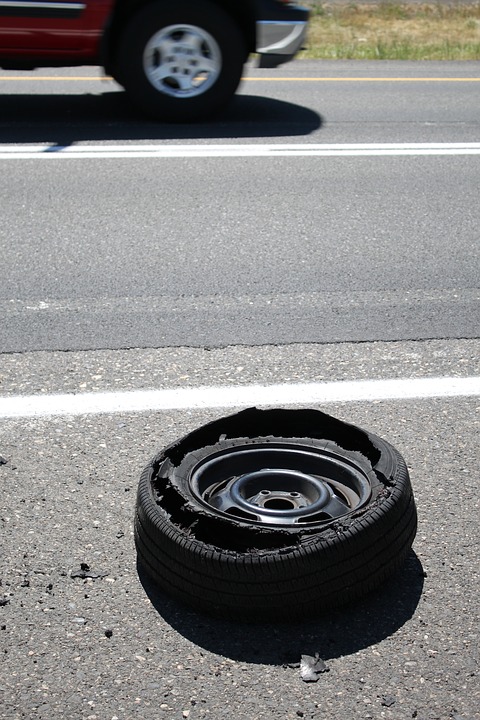 The harnesses are sold complete with an abrasive awl to expand the hole in the tire and improve the contact of the repair harness with its edges, as well as a needle for installing the harness and an adhesive to fix it and at the same time seal the puncture. When choosing a repair kit in a store, you should pay attention to the following nuances:
The harnesses are sold complete with an abrasive awl to expand the hole in the tire and improve the contact of the repair harness with its edges, as well as a needle for installing the harness and an adhesive to fix it and at the same time seal the puncture. When choosing a repair kit in a store, you should pay attention to the following nuances:
Install the harness in the following order. First, the found hole is expanded with an abrasive awl - you need to insert and remove it several times into the puncture site. Then the tourniquet is inserted into the eye of the needle, and glue is applied to it. After that, the needle with the tourniquet must be inserted into the hole in the tire and pulled out sharply - so that the tourniquet remains in the hole, and the needle comes out without it. If everything worked out, it remains only to cut the end of the harness flush with the surface of the tire and pump up the wheel.
If everything worked out, it remains only to cut the end of the harness flush with the surface of the tire and pump up the wheel.
The advantages of repairing with a harness are quite decent reliability, simplicity and low cost. On a well-repaired tire, you can drive for a long time, and if the repair site starts to poison, you can either replace the harness or have the tire repaired in a quality service. Among the minuses is the possibility of damaging the cord during installation, as well as lower reliability compared to “full-fledged” repair methods in a tire shop. Strictly speaking, a tourniquet is still a temporary repair, so if it is possible to pump up a wheel and get to a tire fitting, then it is better not to enlarge the hole in the tire and get to the experts.
2. The second repair option is aerosol liquid sealants sold in cans. To repair a punctured tire with sealant, you need to remove the foreign object from the puncture site, then pour the sealant into the wheel through the valve, twist it to distribute the composition inside the tire, pump up the wheel and drive several kilometers at low speed for the final uniform distribution of the sealant.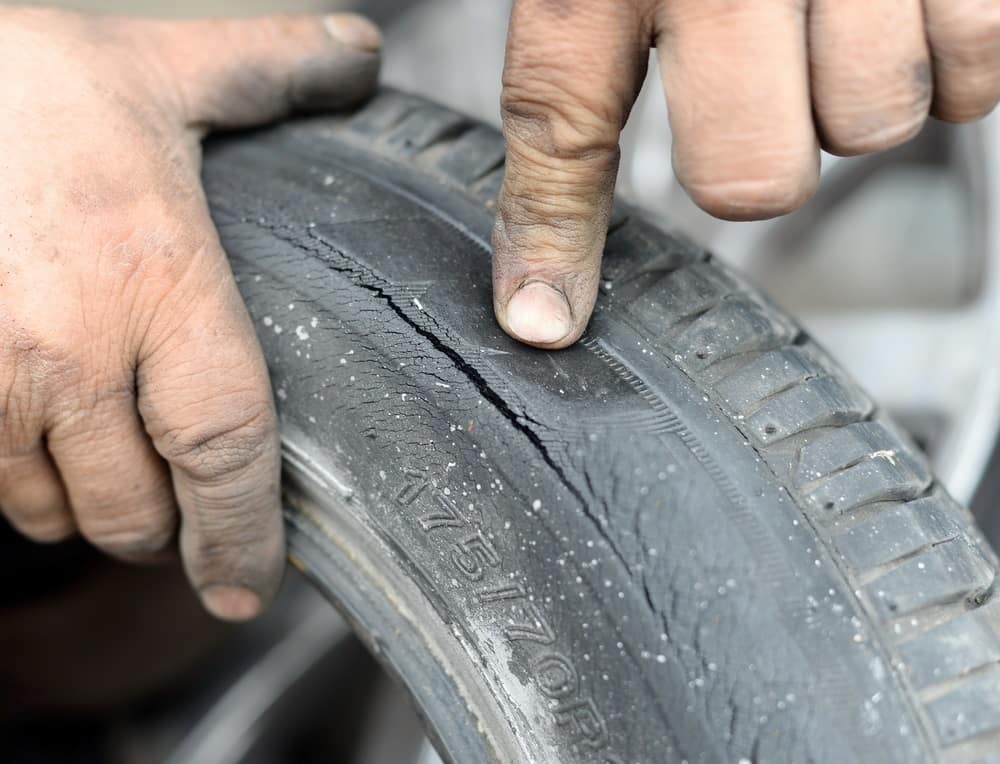
Among the advantages of this repair is the simplicity and less labor intensity compared to installing a harness. However, there are also disadvantages: the larger the hole, the higher the chance that the sealant will not be able to eliminate it, and such a repair can affect the wheel balance. Compared to a tourniquet, it can be considered even less reliable and preferable, but simpler.
Repair options at a tire shop
If you put on a spare tire and brought the wheel to a tire shop, you may also be offered several repair options. Consider the most popular with an indication of the advantages and disadvantages.
1. The first repair method is the same harness installation as described above. As we remember, the tourniquet refers to a temporary repair, so among tire specialists this method is considered bad form, but many workshops do not exclude it from the list of services. All the advantages and disadvantages are the same here: such a repair will be the fastest, simplest and cheapest, but less reliable than other methods. It is worth choosing it in cases where the price and / or speed of the procedure is more important to you than anything else. If quality is a priority, then it is better to fork out for the options listed below.
It is worth choosing it in cases where the price and / or speed of the procedure is more important to you than anything else. If quality is a priority, then it is better to fork out for the options listed below.
2. The second option for repairing a puncture is to install a patch on the inside of the tire, the so-called cold vulcanization. In this case, the tire is removed from the disk, the surface around the puncture is treated with an abrasive, and the damage is sealed with a special patch. This is a more preferred repair method than a tourniquet: it is more reliable and durable, especially in the case of side punctures, when not the thick tread part of the tire is damaged, but the thinner sidewall. Among the minuses, only a higher cost can be noted: in addition to the actual tire repair, you will have to pay for the removal and installation of the wheel (or do it yourself), tire fitting and balancing.
3. The third option is a "complex" of the first and second: installation of the so-called repair "fungus".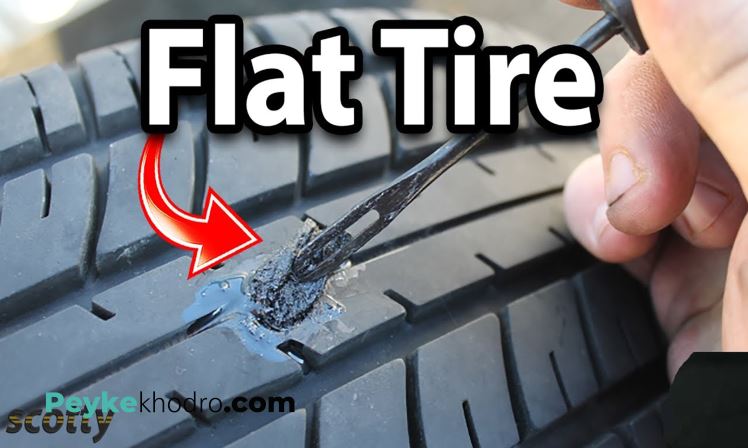 The “hat” of the fungus is a patch, and the “leg” is threaded from the inside of the tire to the outside. After gluing the patch, the excess part of the leg is cut off, as in the case of the tourniquet. Thus, not only the inner surface of the tire is closed, but also the hole itself. The advantages and disadvantages of this repair method are generally the same as those of a patch.
The “hat” of the fungus is a patch, and the “leg” is threaded from the inside of the tire to the outside. After gluing the patch, the excess part of the leg is cut off, as in the case of the tourniquet. Thus, not only the inner surface of the tire is closed, but also the hole itself. The advantages and disadvantages of this repair method are generally the same as those of a patch.
4. An extreme, “emergency” measure when repairing a punctured wheel is to install a camera in it. Typically, this method is used for tires that are no longer worth repairing, or “for reliability” after repairing a complex puncture. It should be understood that almost all modern tires are tubeless, that is, they are not designed to install a camera, so it’s not worth driving a wheel repaired in this way for a long time. Installing a tube is a temporary solution for riding until a new tire is purchased, and sometimes such wheels are left as spares. So this repair method can be kept in mind as a backup.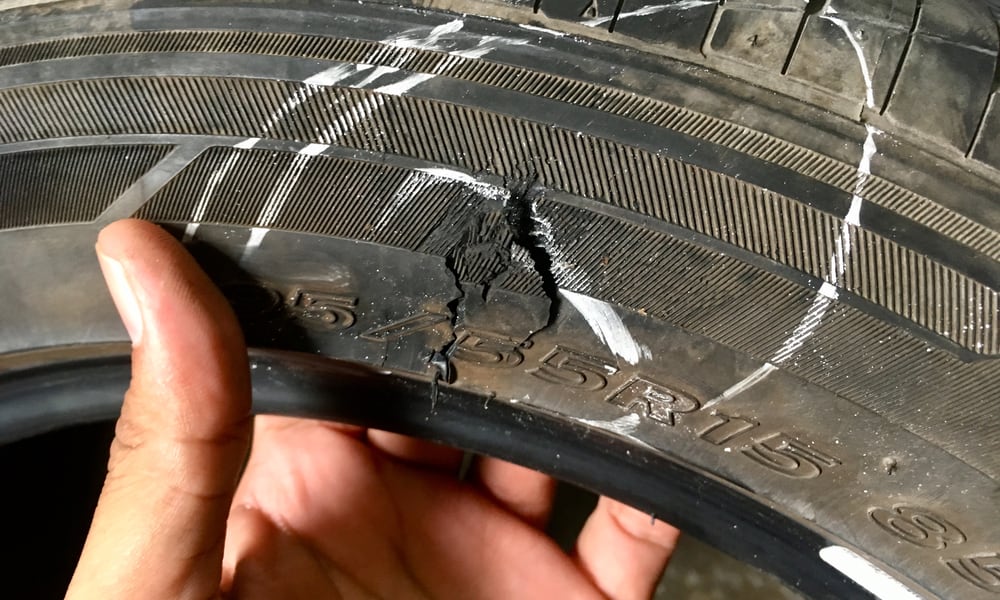
Finally
We have deliberately left out of this text such methods as combined repair of tires with a tourniquet and a patch and hot vulcanization. The first is used quite rarely and for specific damage, and it is enough just to know about its existence. Well, the second is used to repair serious side cuts, and it is not only rare, but also very expensive. The cut site in this case is prepared, filled with raw rubber and processed with a hot press for vulcanization. Equipment for this procedure is not available in every tire shop, and the cost of repair can be about half the cost of a new tire.
interesting popular questions
Articles / Tests Ninety-nine secrets: check what you know about the VAZ-21099 Some thirty years ago, the VAZ-21099 was a symbol of prestige and a real dream car for residents of newly formed states that arose within the CIS on the wreckage of the very country in which . .. 3390 0 11/12/2022
.. 3390 0 11/12/2022
Articles / Tuning Complete set that was not: tuning Subaru Forester II SG Attitude towards tuning, even among car owners, can be different: someone is a fan of any modifications, someone is fond of styling, someone loves sleepers, and someone (for example, me) is generally a pro ... 2016 0 2 11/11/2022
Articles / Repair and maintenance Air filter index: Parts price pullback, no shortages and a flurry of fakes The ruble exchange rate has stabilized in recent months at a relatively comfortable level for importers. Did prices for spare parts and consumables follow? In general, yes, and the prices for some... 1199 2 one 09.11.2022
Did prices for spare parts and consumables follow? In general, yes, and the prices for some... 1199 2 one 09.11.2022
Test drives / Test drive Haval Dargo vs Mitsubishi Outlander: the dog is barking, the stranger is coming In the Haval dealership in the south of Moscow, life is in full swing: buyers look at cars, communicate with managers and sign some papers. While I was waiting for the test Dargo, the same cross... 15847 7 205 13.09.2022
Test drives / Test drive Motor from Mercedes, emblem from Renault, assembly from Dacia: test drive of the European Logan 1. 0 It would seem that what's new can be told about the second generation Renault Logan, known to every Russian taxi driver, as they say, up and down? However, this car has... 13316 ten 41 08/13/2022
0 It would seem that what's new can be told about the second generation Renault Logan, known to every Russian taxi driver, as they say, up and down? However, this car has... 13316 ten 41 08/13/2022
Test drives / Test drive Geely Coolray vs Haval Jolion: Free Cheese? If! Do you want to buy a car today with a full warranty, on credit at an adequate rate, without wild dealer markups? Now this is still a task, because a full-fledged chain of "representation - s... 10402 26 thirty 08/10/2022
Another season of changing shoes is approaching. And you may remember that on one of the tires after the last winter/summer there is a jamb - a small bump. I don’t want to run to the store for the sake of one new tire. We understand. Or maybe it looks even better if repaired?
And you may remember that on one of the tires after the last winter/summer there is a jamb - a small bump. I don’t want to run to the store for the sake of one new tire. We understand. Or maybe it looks even better if repaired?
Yes, not every wheel that meets with a nail, rebar sticking out of the ground or a sharp stone on the road is considered damaged. Everything, of course, depends on the scale of the damage and its location on the tire itself. Some are easily repaired, while others are simply impossible to do - the tire can only be sent to the trash.
A bulge on a wheel, referred to by drivers as a bump or bulge, is the most common tire sidewall defect. It appears due to a collision with an obstacle or after falling into a pit, more often at high speed. The threads of the sidewall carcass are easily damaged by impact, and the tire at this point can no longer hold the load and air pressure - swelling appears. A small bump sooner or later turns into a big one, and driving with such a defect is dangerous - the wheel can shoot at any moment.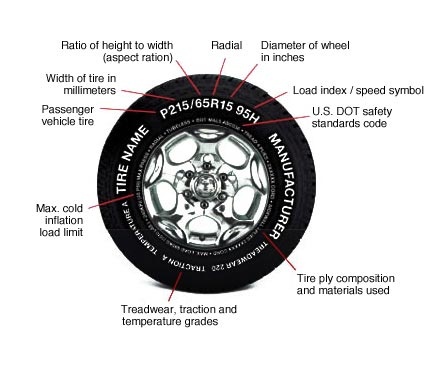 At high speed, this is fraught with loss of control, departure from the road and a rollover.
At high speed, this is fraught with loss of control, departure from the road and a rollover.
The quality of roads in Kazakhstan contributes to the appearance of bulges on tires
Some types of bulges are repairable, although this is a temporary measure. Not a single patch can restore the factory rigidity. Ideally, change the tire.
Special cord patches can extend the life of a tire with a herniation, even if the swelling has appeared on the tread. The sidewall is a different story. If the swelling appeared at a distance of more than 40 mm from the side, it can be repaired. If not, then the wheel needs to be replaced. Blisters on low profile tires are most often non-repairable.
For maximum safety when riding with a repaired bump, insert the tube. This is an inexpensive and reliable solution. On our market, you can find cameras made in China and Russia, the latter are slightly more expensive, but also of better quality.
The elimination of a side cut is a serious operation, therefore, as in the case of a bump, you will have to go to the professionals.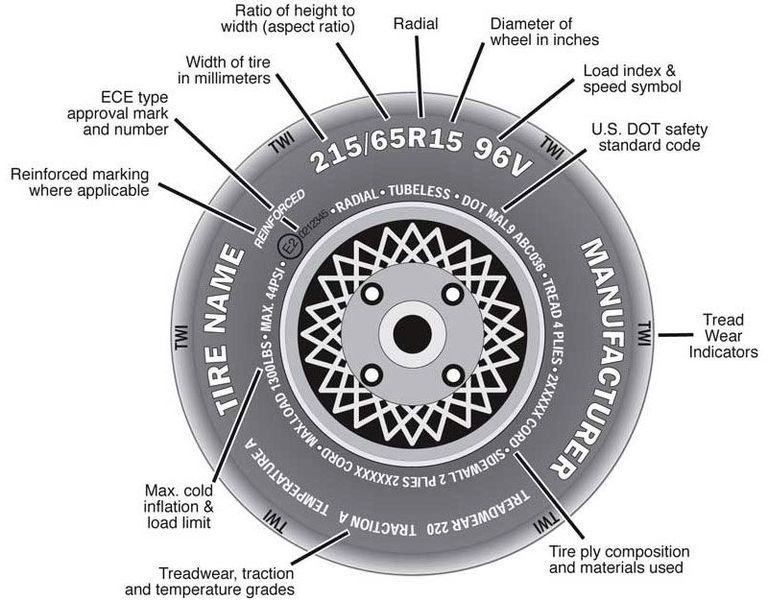 We need cord patches, fortunately in our time they are of different sizes and with a different number of layers. And if you do it wisely, then you can't do without special tools and vulcanization.
We need cord patches, fortunately in our time they are of different sizes and with a different number of layers. And if you do it wisely, then you can't do without special tools and vulcanization.
A cut, by the way, can not be healed in all cases. If the gap is in the shoulder area of the tire, it is unlikely that anyone will undertake to repair it, since no guarantees can be given here. However, our Kulibins take on even the most difficult cases, cutting out parts of the sidewalls from the tires and even weaving the cord on their own.
Tire overhaul. We wouldn't put such a wheel on ourselves
Low-profile tires can be repaired, but more difficult. A tear in the sidewall is easier to seal on tires with a medium or high profile.
Sometimes a cut is confused with a pluck. This is when the outer layer of the sidewall caught on something sharp, a tear formed, but the frame itself remained intact. There is nothing wrong with that, although the drivers at the tire fitting company successfully repair the cut, for which they take it accordingly.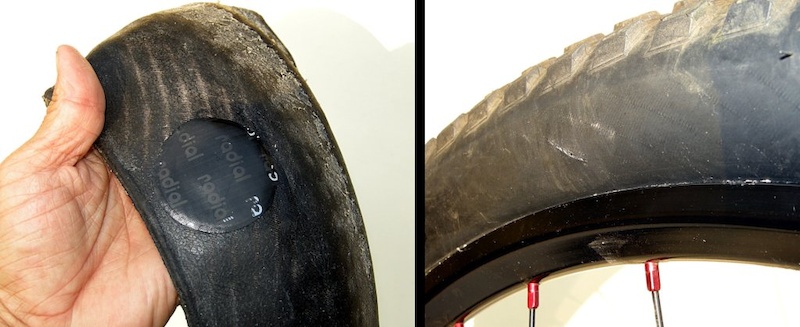
If a piece of rubber remains on the sidewall, then glue it with ordinary superglue (101st). If it came off, then it is better to cover it with raw rubber and vulcanize. Leaving the pluck bare is not recommended, because the tire carcass, often consisting of a metal cord, will quickly corrode.
In Europe, defective or used tires are perforated before being sent for scrap to prevent their resale and possible operation. But they don’t know that we have such holes on the sidewall patched once or twice
Cuts and hernias are not the only possible damage to the side of the tire. You can also spoil the side ring, in the process of changing shoes, for example. If it’s for garlic, then such a tire is already dangerous. Sooner or later, the tire pressure and the load in motion will start to squeeze the rubber off the rim - a wheel explosion can occur.
Repair of this ailment is taken if the wire ring - the base - is intact. There are no special technologies and materials to correct this particular problem, but most often craftsmen use a two-component composition for chemical (also called cold) vulcanization. After mixing, the mass is pressed into a fat-free damage. Compound manufacturers recommend waiting 72 hours before mounting a tire. Of course, our masters do not pay attention to this condition - they put the tire right away. And it’s good if the wheel is flat because of this at night in the parking lot, and not on the road.
There are no special technologies and materials to correct this particular problem, but most often craftsmen use a two-component composition for chemical (also called cold) vulcanization. After mixing, the mass is pressed into a fat-free damage. Compound manufacturers recommend waiting 72 hours before mounting a tire. Of course, our masters do not pay attention to this condition - they put the tire right away. And it’s good if the wheel is flat because of this at night in the parking lot, and not on the road.
If the side ring tears are barely noticeable, but the wheel still deflates, then you can use a special liquid - a bead seal designed to seal a tubeless tire.
These seals have been used in motorsport for some time. In particular, in the American Formula D Drift Series, drivers used compounds to keep the tire on the rim even with minimal tire pressure. Now they are banned.
Pay attention to the left rear wheel of the Nissan Silvia S13. Due to too low pressure, it was literally taken off the disk under load
Every schoolchild has faced this problem when patching the inner tube of his bike after hitting something sharp.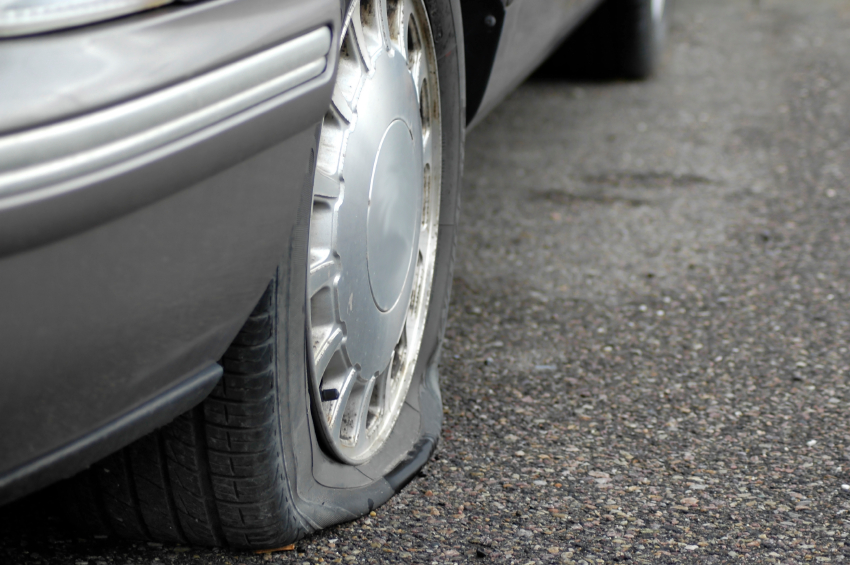 Repairing a car tire puncture with your own hands will also not be difficult even on the road. But for this you will need a pump (or compressor) and a universal tire repair kit with harnesses. All this is sold at any car market or gas station.
Repairing a car tire puncture with your own hands will also not be difficult even on the road. But for this you will need a pump (or compressor) and a universal tire repair kit with harnesses. All this is sold at any car market or gas station.
Repairing a tire on the side of the road with harnesses
The process is simple. If we are talking about the front wheels, then in most cases the wheel can not even be removed, it is enough to turn the steering wheel in the right direction, find the puncture site and carry out repairs. First, the hole is cleaned with a helical awl from the set. The tourniquet itself is smeared with glue and tucked into the eye of the awl, after which it is inserted into the tire hole. With a sharp movement, the tool is removed, and the tourniquet remains in place and clogs the hole. The tails are cut with a knife, but not at the root, it is recommended to leave about 20 mm. The tire is inflated and checked.
Sometimes a nail or self-tapping screw clogs the hole itself, remaining in it. If you see a hat in a tread, do not rush to pull it out. While the pressure is holding, move to vulcanize. And sometimes they drive with a screw in a tire for weeks.
If you see a hat in a tread, do not rush to pull it out. While the pressure is holding, move to vulcanize. And sometimes they drive with a screw in a tire for weeks.
Repair of a puncture at a tire shop
Punctures are also repaired with harnesses at a specialized service, although among professionals such repairs are not considered long-term. After a few months, the flagella dry out and can let air through. There are more advanced methods like cold and hot vulcanization. The latter is more reliable. In this case, the hole is sealed with an elastic patch, and the funnel from a foreign object is filled with a special compound. After that, a vulcanizer is put on the tire, it heats up the rubber and solders it.
In addition to the plaster, the puncture is also repaired with special cord fungi. Craftsmen process the puncture site: drill it and treat the surface with a tool to roughen it. Then the repair area is lubricated with glue (it is also called cement) and a fungus is introduced.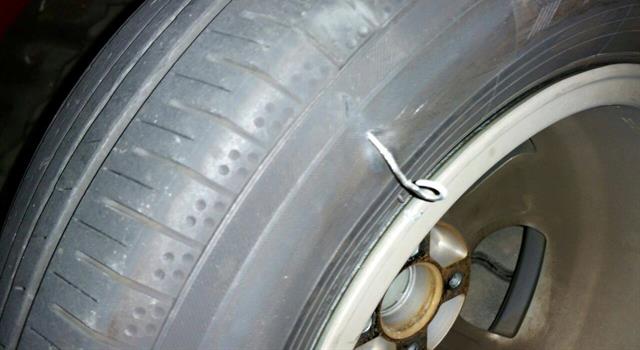 This is done from the inside of the tire. The cap of the fungus is rolled, and the excess legs are simply cut off from the outside.
This is done from the inside of the tire. The cap of the fungus is rolled, and the excess legs are simply cut off from the outside.
Puncture repair with sealant
With the advent of tubeless wheels, and later run flat tires, many automakers began to abandon spare wheels. Instead, repair kits with compressors are supplied with the machines. A repair kit is essentially a bottle of pressurized sealant. Later, such spray cans began to appear on the shelves of ordinary car dealerships.
This method has not taken root in the CIS, because the condition of the roads makes it necessary to have at least a stowaway in the kit, but it can also be considered as a method of repair on the road.
Jack up the car and pump sealant through the nipple into the damaged wheel. Next, you should spin the wheel, then pump it up, lower the car and drive a few hundred meters. If the tire tightness has not been restored, repeat the procedure.
If the tire tightness has not been restored, repeat the procedure.
For commercial vehicles, cutting the tread with a special device (regrower) is a common thing. Moreover, such tire retreading is provided by the factory (marked REGROOVABLE on the sidewall) to increase the service life. But there are entrepreneurs who undertake to deepen the grooves in tires for passenger cars. But they are not intended for such an operation. Often used tires for sale are “refreshed” in this way. Be careful!
What is the danger?
The worst option is that the retreaded tire will shoot out on the road, because when deepening the grooves, the master can damage the undertread layer. Such a tire will not be able to hold pressure at some point. There will be a boom! At best, the tire will indeed last a little longer, but is the game worth the candle? We think it's not worth it.
How is cutting done?
A regrower is used to cut the tread. Roughly speaking, this is a large soldering iron with interchangeable tips of various shapes. It goes through rubber like a knife through butter.
Roughly speaking, this is a large soldering iron with interchangeable tips of various shapes. It goes through rubber like a knife through butter.
If the tire is for passenger cars, then it is worth taking on a regrower only in one case - when part of the tread pattern was welded with "new" rubber during repair. This is where threading comes in handy in order to restore the grooves and symmetry of the tread.
Vehicle operation is prohibited if:
— tires have a residual tread height of less than 1.6 mm;
- tires have punctures, cuts, ruptures that expose the cord, as well as delamination of the carcass, delamination of the tread and sidewall;
- tires in size or load capacity do not match the car model;
- tires of various sizes, designs (radial, diagonal, chamber, tubeless), models, with different tread patterns, winter and summer, studded and non-studded, new and restored, are installed on one axle of the car;
— Tires retreaded according to the second repair class are installed on the front axle.